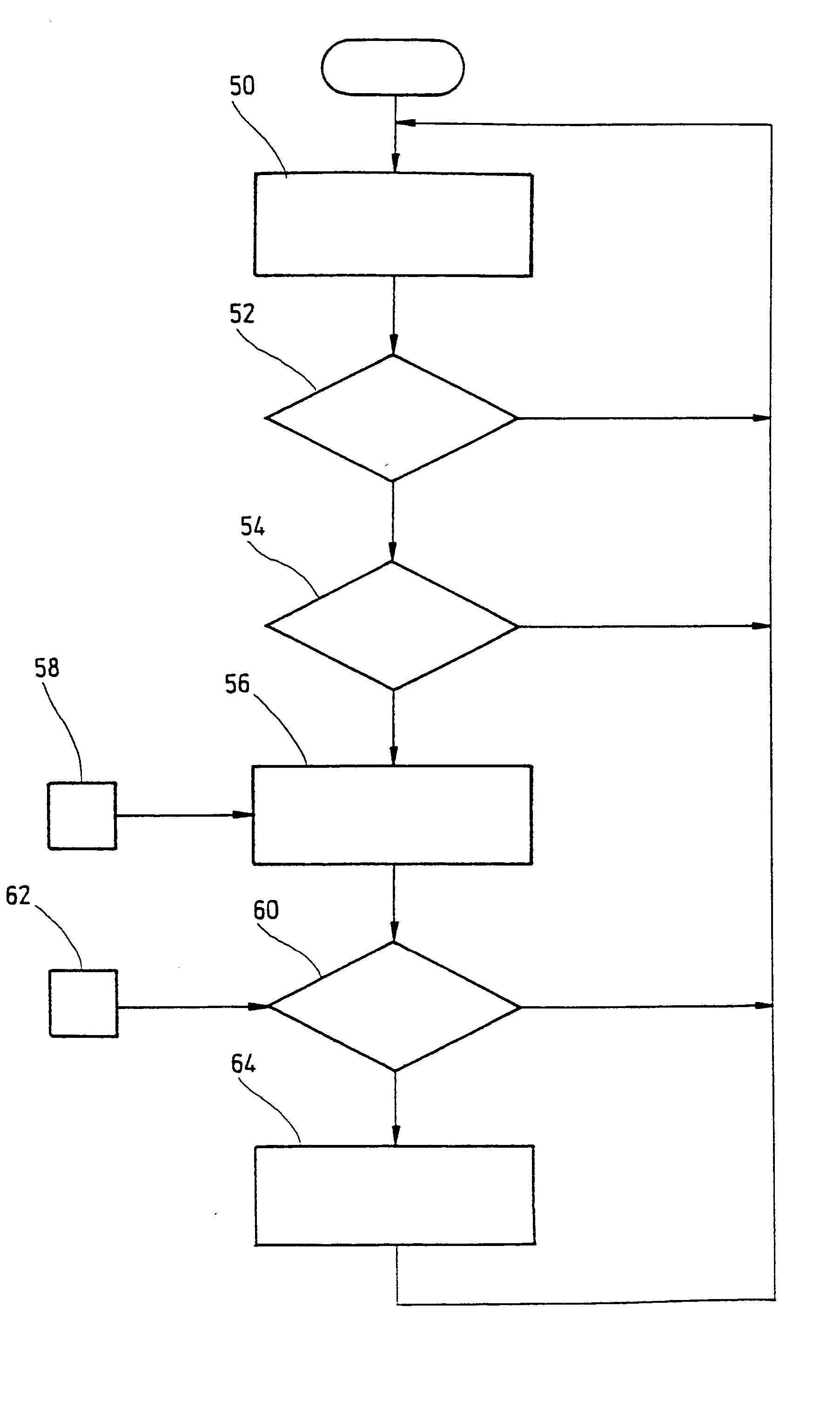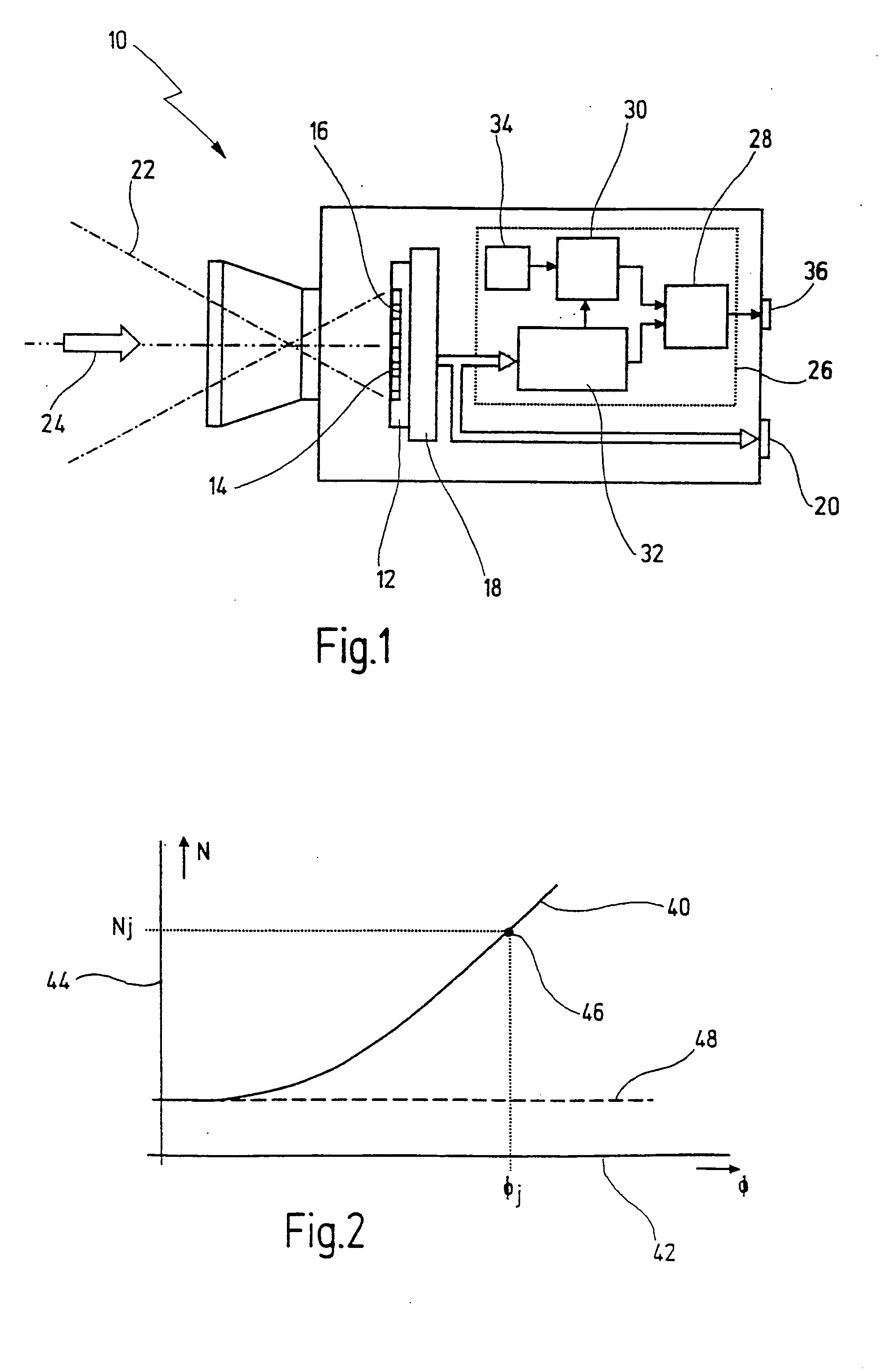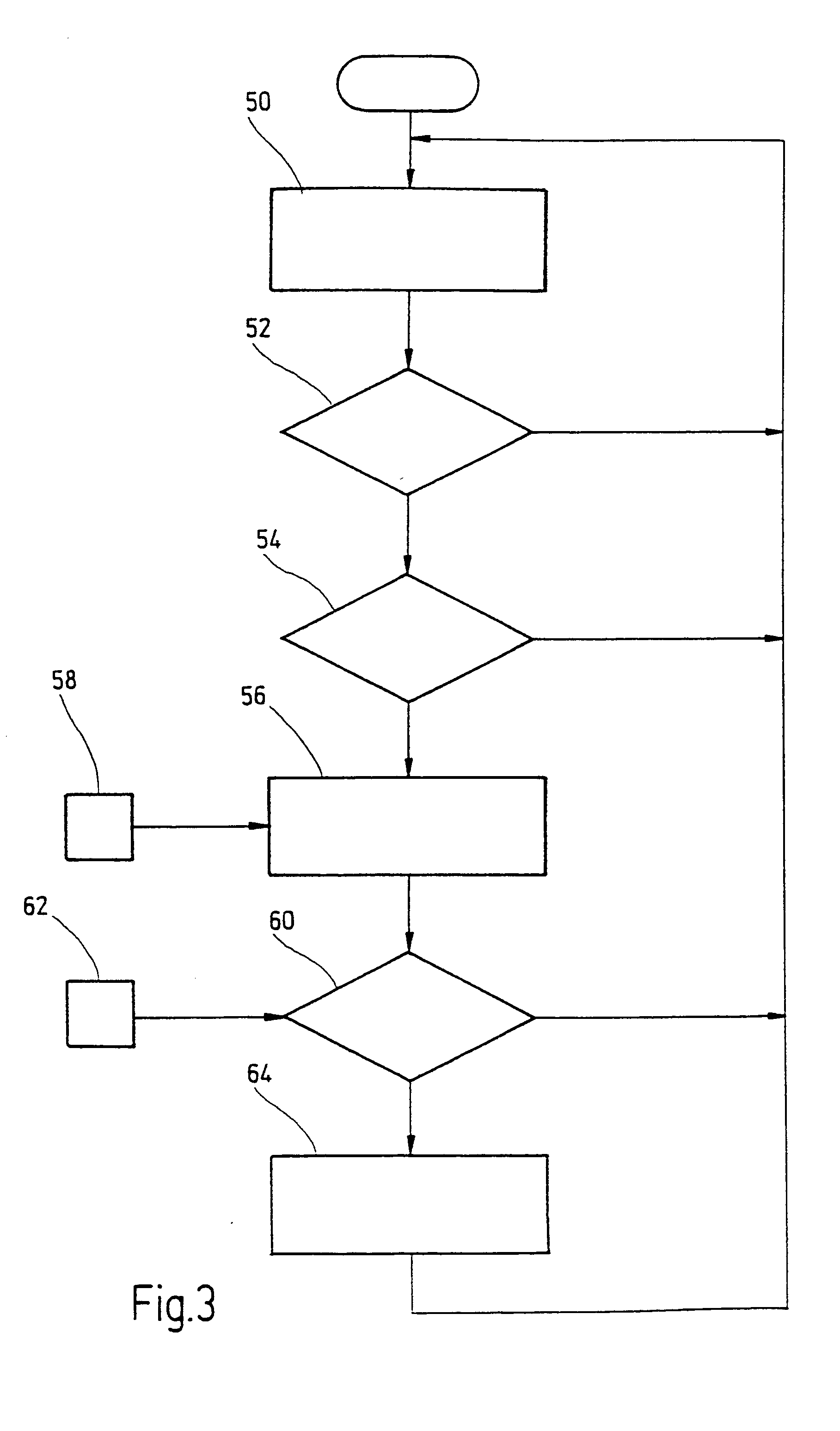Method for checking functional reliability of an image sensor having a plurality of pixels
- Summary
- Abstract
- Description
- Claims
- Application Information
AI Technical Summary
Benefits of technology
Problems solved by technology
Method used
Image
Examples
Embodiment Construction
[0051] In FIG. 1, an apparatus according to the invention in the form of an electronic camera is designated in its entirety by reference numeral 10.
[0052] The camera 10 has an image sensor 12 having a plurality of pixels 14, 16. The pixels 14, 16 are arranged in a matrix-like fashion, in the case of small image sensors sometimes also in linear fashion, with respect to one another and together form the light-sensitive area of the image sensor 12.
[0053] The reference numeral 18 designates an output unit, which provides grey-scale values of the light recorded by the pixels 14, 16 for read-out. In this case, the term “grey-scale values” has become established for the designation of these values. However, it does not preclude the image sensor from also supplying color information coded in these values.
[0054] In this case, the grey-scale values are forwarded as digital numerical values via a terminal 20 to a downstream image processing unit. As an alternative, the downstream image proc...
PUM
 Login to View More
Login to View More Abstract
Description
Claims
Application Information
 Login to View More
Login to View More - R&D
- Intellectual Property
- Life Sciences
- Materials
- Tech Scout
- Unparalleled Data Quality
- Higher Quality Content
- 60% Fewer Hallucinations
Browse by: Latest US Patents, China's latest patents, Technical Efficacy Thesaurus, Application Domain, Technology Topic, Popular Technical Reports.
© 2025 PatSnap. All rights reserved.Legal|Privacy policy|Modern Slavery Act Transparency Statement|Sitemap|About US| Contact US: help@patsnap.com



